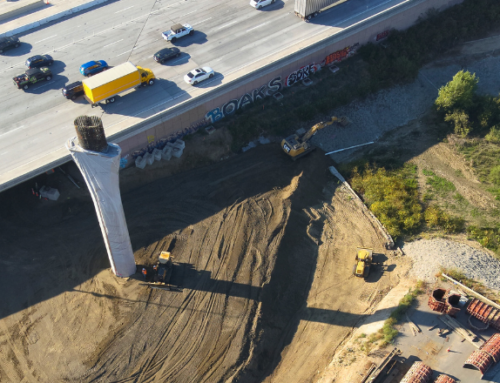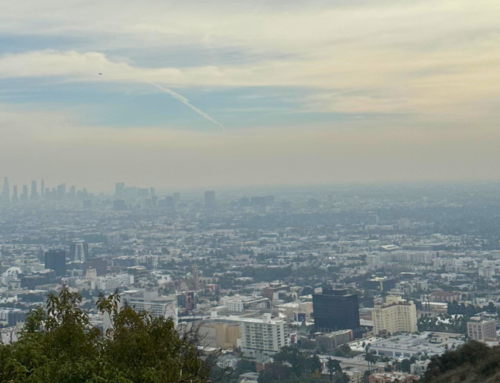Many Public Water Systems at Risk
“Utterly unacceptable that in 2020, we still can’t guarantee clean water to communities across America. It’s a fundamental human right. We have the solutions to address this crisis. Congress just needs to act,” Vice President Kamala Harris tweeted in response to a Fresno Bee article about the residents of Earlimart, California losing water service when a 50-year-old well failed.
Unfortunately, it’s not just that small Tulare County town burdened with water infrastructure issues. The State Water Board’s 2021 Needs Assessment illustrates “the breadth and depth of challenges to safe and affordable water supply provision across system types in California for the first time.” Results show there are many water systems that are failing and others that are at-risk of failing to provide safe and affordable drinking water.
The cost of ignoring these issues over the years now requires an expensive price tag for fixing them today. The study identified a funding gap of $4.6 billion to resolve safe drinking water problems over the next five years.
What’s going on?
Californians that have clean water every time they turn on the tap may not be aware that other Golden State neighbors find such a practice a luxury. In Needles, for example, approximately 4,300 residents now rely on one viable water well that pumps 23 hours a day.
“It’s a scorcher in the summer out here. You can’t live in this climate without water. People will die,” said Needles City Manager Rick Daniels. “Our water infrastructure is eroding out from underneath us. It’s a dire situation.”
In 2020, the revised State Water Resources Control Board (SWRCB) regulations for iron and manganese in drinking water forced the Needles Public Utility Authority to stop using water from two of the three wells that served the eastern San Bernardino County city. Additionally, 250 leaks were found in the system and the city’s one pressurized line to its reservoir failed last January.
‘Human Right to Water’
Science shows a person can only survive three or four days without water. It is more essential than food. “Human Right to Water” (HR2W) means the recognition that “every human being has the right to safe, clean, affordable, and accessible water adequate for human consumption, cooking and sanitary purposes,” as defined in Assembly Bill 685.
In 2016, the California State Water Resources Control Board adopted a Human Right to Water Resolution and the “HR2W list” highlights public water systems that are out of compliance or consistently fail to meet primary drinking water standards.
There were 326 community water systems marked as failing on the 2021 HR2W list. Another 617 public water systems were determined to be at-risk of failing to sustainably provide a sufficient amount of safe and affordable drinking water. While the San Joaquin Valley had some of the most problematic systems, researchers also found trouble spots across most of urbanized Southern California.
What can be done?
Investing in water infrastructure is essential. “We’ve known for some time about the number of systems failing, and steps have been taken to start to address the problem. Our report clearly shows the state’s Safe and Affordable Funding for Equity and Resilience (SAFER) program, which provides $130 million annually over 10 years, is a great help—but it doesn’t go far enough to fill the gap we’re seeing,” said Greg Pierce, lead researcher on State Water Resources Control Board study and associate director of the UCLA Luskin Center for Innovation.
In fact, the total estimated capital costs of addressing the challenges faced by currently failing HR2W list and At-Risk systems are approximately $4.5 billion for modeled long-term solutions and $1.6 billion for the estimated duration of modeled emergency/interim solutions.
Rebuild SoCal Partnership offers help
“A city living with outdated infrastructure as badly as Needles is not something we should be talking about in the 21st Century,” said Marci Stanage, Rebuild SoCal Partnership’s (RSCP) Director of Water and Environmental Relations. She set out to find ways to assist. In 2019, RSCP entered a partnership with California Consulting, Inc., the largest grant writing company in the state, and RSCP agreed to pay all application fees so disadvantaged communities like Needles can apply for state and federal grants.
There are more than 100 disadvantaged communities in the state that also need assistance like this. To understand more about the problems facing California water infrastructure, read The State Water Board’s 2021 Needs Assessment.
If you are as frustrated as RSCP, learn how you can get involved. There is a lot of infrastructure work out there that needs to be done and yet politics have gotten in the way and continue to do so. Join the movement and lend your voice. Share your concerns with others and contact your legislators.
As it states in The State Water Board’s 2021 Needs Assessment report, “Only together will we be successful in achieving the Human Right to Water goal for all Californians.”




